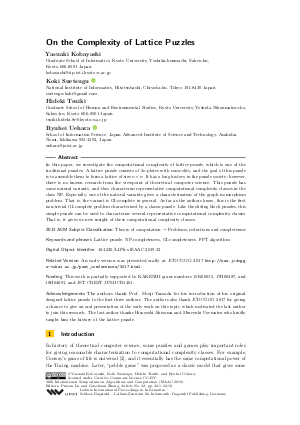LIPIcs.ISAAC.2019.32.pdf
- Filesize: 1.45 MB
- 12 pages

 Creative Commons Attribution 3.0 Unported license
Creative Commons Attribution 3.0 Unported license







Feedback for Dagstuhl Publishing